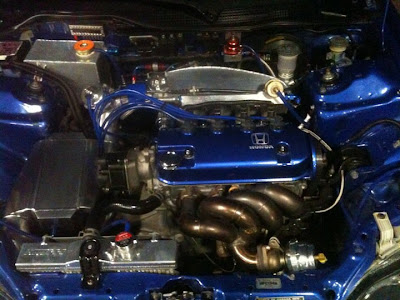Two key characteristics differentiate stroker kits from OEM rotating assemblies.
First, and most important, the crankshaft's rod journals are physically farther from the main journals than on the original equipment. A given extension in the distance between the rod and main journals results in twice that distance in increase of piston travel.
The second key characteristic of a stroker kit versus OEM is the required changes to allow a stroked crank to 'fit'. This is accomplished in one of three ways:
▪ Location of the piston pin (and the top of the rod) within the piston, or the compression height is shortened.
▪ Length of the rod is shortened.
▪ Height of the cylinder is lengthened.
Most Custom stroked cranks also utilize a radical process they invented called a 'shrunk rod'. A proprietary process, rod shrinking evidently involves heat and pressure to compress it to a height 1/2 the distance of the stroke increase, thus bringing the piston deck height back to original.
This process allows for the use of any stock or aftermarket piston already manufactured for that particular model, without the need of a spacer plate or piston modification.
The Custom stroke process usually costs much less than purchasing a new crank assembly; it also uses OEM components, which have known properties and reliability.
Advantages of a stroked crank
An engine with a stroked crank will usually make more overall horsepower than an engine with a bore kit with the same displacement.
Disadvantages of a stroked crank
Increased stroke makes the piston travel further up and down. Since the amount of time allowed for this movement is not increased, the piston speed increases with a stroked crank (piston must move a further distance in the same amount of time). This can sometimes cause pistons to wear more quickly.
Large increases in stroke can decrease an engine's ability to perform optimally at high rpm. Engines used at sustained high rpm usually will be better with less stroke and more bore (oversquare).
Obtaining a stroked crank
Purchase a new stroked crankshaft from an aftermarket or OEM source: A typical complete stroker kit is composed of the crankshaft, connecting rods, pistons, piston pins, main bearings, rod bearings, and piston rings. This assembly is also called "the rotating assembly" or "the bottom end". Many different types of each of the components can be used for different applications. Crankshafts, for example, may be either of forged or of cast manufacture. Rods may consist of I-beam or H-beam rods made of various materials, from steel to titanium. Rods may be stock length (requiring the use of either shorter pistons, or taller cylinders), or shorter length (usually utilizing stock height pistons and cylinders).
APT have a stroket kit for 4G93 NA or Turbo
Mivec 1.8 Block stroker 2.0L
 |
| Mivec Runing Haltech Sprint 500 170hp 14nm torque stock block 1.8 Mivec Head and Jun Cam |
Advancedperformancetuning@gmail.com


























































